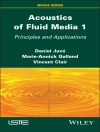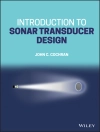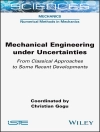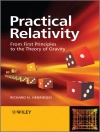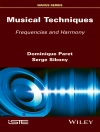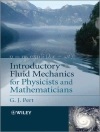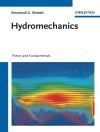Wall turbulence is encountered in many technological applications
as well as in the atmosphere, and a detailed understanding leading
to its management would have considerable beneficial consequences
in many areas. A lot of inspired work by experimenters,
theoreticians, engineers and mathematicians has been accomplished
over recent decades on this important topic and Statistical
Approach to Wall Turbulence provides an updated and integrated view
on the progress made in this area.
Wall turbulence is a complex phenomenon that has several industrial
applications, such as in aerodynamics, turbomachinery, geophysical
flows, internal engines, etc. Several books exist on fluid
turbulence, but Statistical Approach to Wall Turbulence is original
in the sense that it focuses solely on the turbulent flows bounded
by solid boundaries. The book covers the different physical aspects
of wall turbulence, beginning with classical phenomenological
aspects before advancing to recent research in the effects of the
Reynolds numbers, near wall coherent structures, and wall turbulent
transport process.
This book would be of interest to postgraduate and undergraduate
students in mechanical, chemical, and aerospace engineering, as
well as researchers in aerodynamics, combustion, and all
applications of wall turbulence.
İçerik tablosu
Foreword ix
Ivan MARUSIC
Introduction xi
Chapter 1. Basic Concepts 1
1.1. Introduction 1
1.2. Fundamental equations 1
1.3. Notation 4
1.4. Reynolds averaged Navier-Stokes equations 4
1.5. Basic concepts of turbulent transport mechanisms 6
1.6. Correlation tensor dynamics 11
1.7. Homogeneous turbulence 15
1.8. Isotropic homogeneous turbulence 20
1.9. Axisymmetric homogeneous turbulence 33
1.10. Turbulence scales 35
1.11. Taylor hypothesis 39
1.12. Approaches to modeling wall turbulence 40
Chapter 2. Preliminary Concepts: Phenomenology, Closures and
Fine Structure 45
2.1. Introduction 45
2.2. Hydrodynamic stability and origins of wall turbulence
46
2.3. Reynolds equations in internal turbulent flows 55
2.4. Scales in turbulent wall flow 55
2.5. Eddy viscosity closures 56
2.6. Exact equations for fully developed channel flow 61
2.7. Algebraic closures for the mixing length in internal flows
65
2.8. Some illustrations using direct numerical simulations at
low Reynolds numbers 69
2.9. Transition to turbulence in a boundary layer on a flat
plate 76
2.10. Equations for the turbulent boundary layer 77
2.11. Mean vorticity 81
2.12. Integral equations 83
2.13. Scales in a turbulent boundary layer 85
2.14. Power law distributions and simplified integral approach
85
2.15. Outer layer 88
2.16. Izakson-Millikan-von Mises overlap 89
2.17. Integral quantities 91
2.18. Wake region 94
2.19. Drag coefficient in external turbulent flows 96
2.20. Asymptotic behavior close to the wall 98
2.21. Coherent wall structures – a brief introduction
101
Chapter 3. Inner and Outer Scales: Spectral Behavior
105
3.1. Introduction105
3.2. Townsend-Perry analysis in the fully-developed turbulent
sublayer 107
3.3. Spectral densities 110
3.4. Clues to the 1x k _ behavior, and discussion 124
3.5. Spectral density vv E and cospectral density uv E 129
3.6. Two-dimensional spectral densities 131
Chapter 4. Reynolds Number-Based Effects 137
4.1. Introduction 137
4.2. The von Karman constant and the renormalization group 140
4.3. Complete and incomplete similarity 146
4.4. Symmetries and their consequences 155
4.5. Principle of asymptotic invariance. Approach of W.K. George
163
4.6. Mean velocity distribution. Summary 185
4.7. Townsend’s attached eddies 185
4.8. Overlap region in internal flows 228
4.9. Two-point correlations 230
4.10. Active and passive Townsend eddies 239
4.11. Fine structure 249
Chapter 5. Vorticity 259
5.1. Introduction 259
5.2. General characteristics of vorticity 259
5.3. Reynolds shear stress and vorticity transport 261
5.4. Characteristics of the vorticity field close to a wall
264
5.5. Statistics and fine structure 270
5.6. Vorticity transport 277
5.7. Estimating the importance of non-linearity close to the
wall 284
5.8. Measurements 287
Notations Used 291
Subscripts and superscripts 293
Greek letters 294
Abbreviations 295
Bibliography 297
Index 309
Yazar hakkında
Sédat Tardu is an associate professor at Grenoble University in France.


